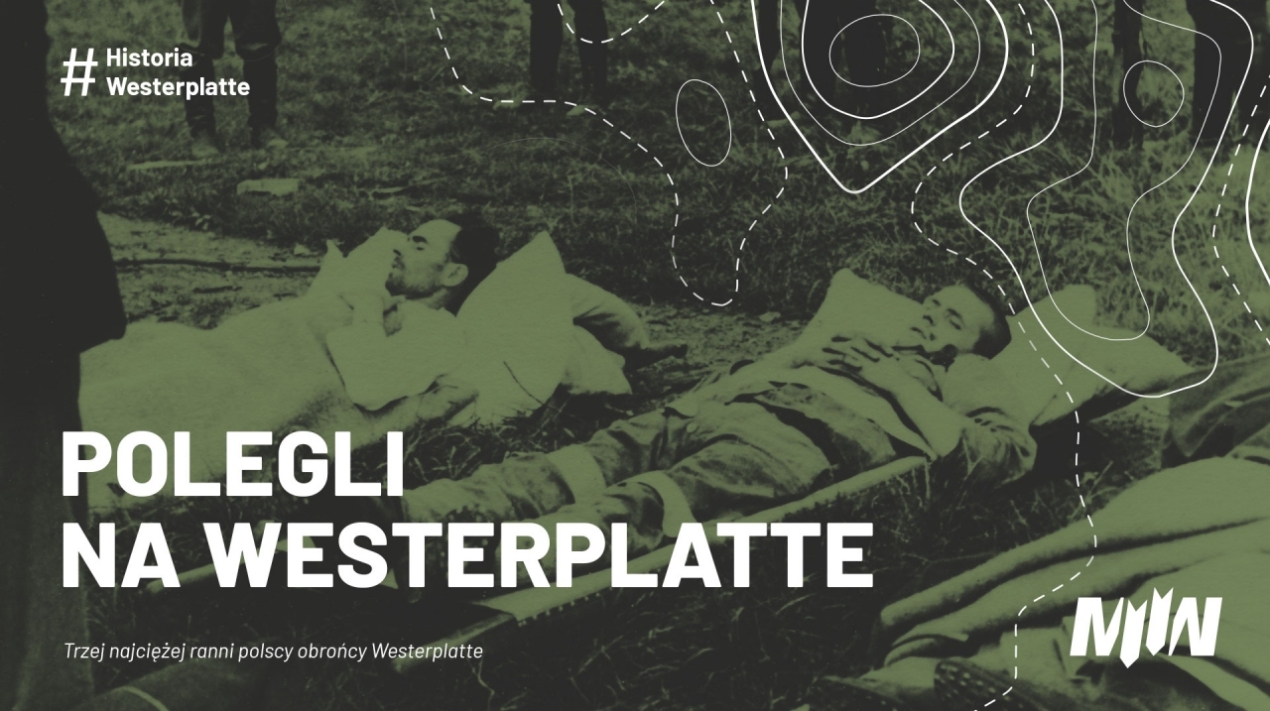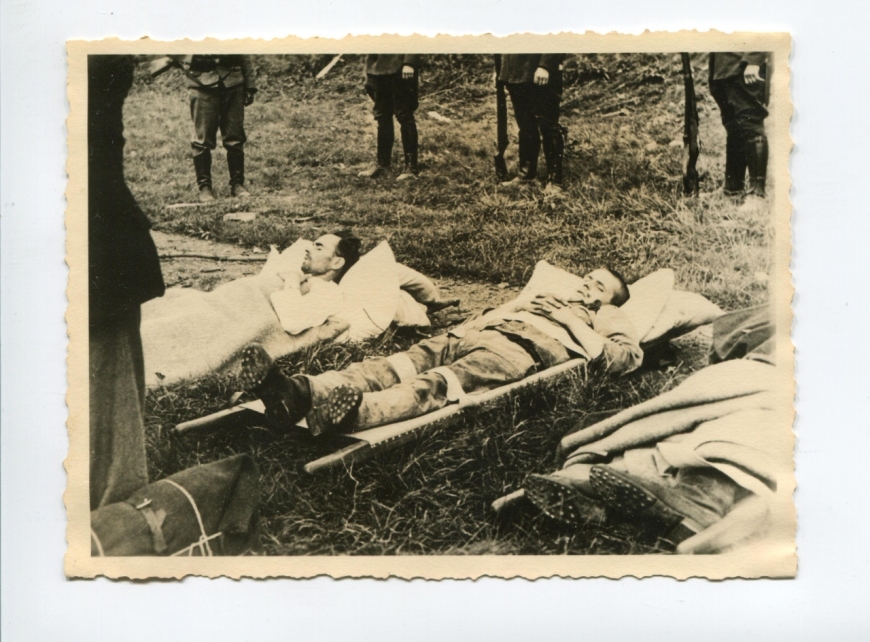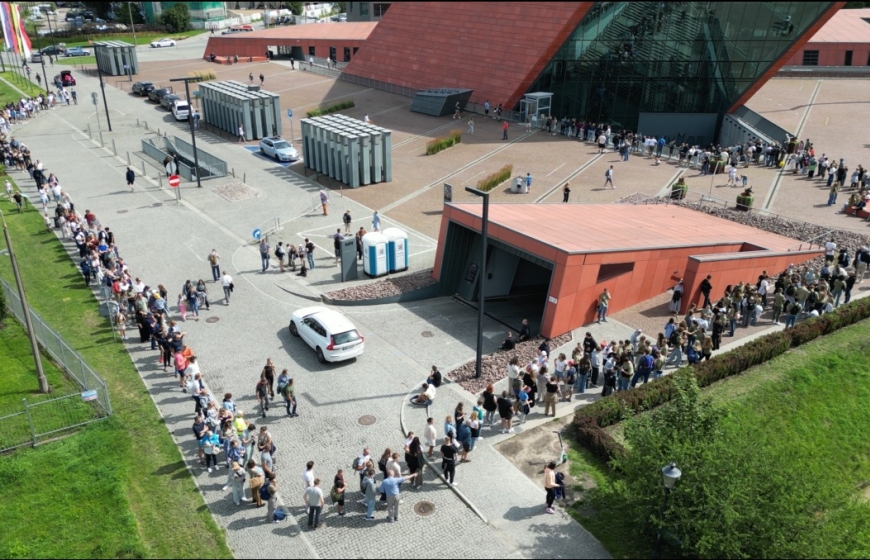#WesterplatteHistory - THE FALLEN OF WESTERPLATTE
As a supplement to the article discussing the transformations and forms of the cemetery at Westerplatte, we would like to commemorate, separately, those for whom this place of eternal rest was established. This is particularly important because the process of identifying the remains of the defenders of Westerplatte is still ongoing, and as a result of the work of archaeologists from the Museum of the Second World War in Gdańsk, only some of the remains have been recognized. Finally, all of the recovered and identified defenders of the Military Depot will rest in the new cemetery at Westerplatte, those who for 80 years, since 1945, have lain in nameless graves, not far from the existing cemetery.
We invite you to familiarize yourself with the list of all those defenders commemorated at Westerplatte.
LIST OF POLISH SOLDIERS WHO FELL IN THE BATTLES AT WESTERPLATTE FROM SEPTEMBER 1st-7th, 1939:
1. Staff Sergeant Reservist Wojciech NAJSAREK (1900–1939) - stationmaster at PKP Gdańsk-Westerplatte. He was seriously wounded (or killed) on September 1st during the first German assault on the Military Depot area. His body was taken by the Germans from the peninsula. The burial place is unknown - it is possible that he was buried in the Zaspa cemetery as one of the unknown Polish soldiers, or he rests in another no longer existing cemetery in Gdańsk.
2. Private Bronisław USS (1916/1920–1939) - (uncertain date of birth) was seriously wounded or killed on September 1st during the fighting near the "Ferry" outpost. His body was taken by the Germans from the Military Depot. The burial place is unknown - he might be one of those buried in Zaspa, unrecognized Polish defenders of the Depot.
3. Corporal Andrzej KOWALCZYK (1914–1939) - was seriously wounded during the fighting on September 1st and buried in a trench in front of guardhouse no. 1. After the battles, he was considered missing. Until the exhumation on March 16th, 2021, by the Museum of the Second World War in Gdańsk, it was believed that his remains were found during earthworks conducted on the Westerplatte Peninsula in 1963, several meters from Guardhouse no. 1. Supposedly identified based on Polish equipment and a harmonica by the still living Westerplatte defenders. The recovered remains were buried at the Central Cemetery Srebrzysko in Gdańsk. On September 1st, 1992, the presumed remains of Corporal Andrzej Kowalczyk were moved and solemnly buried at the Cemetery of the Defenders of Westerplatte. During the examination of the exhumed remains conducted by the Museum of the Second World War in Gdańsk, it was found that the assembled remains allegedly belonging to Corporal Andrzej Kowalczyk had typical German military equipment. Due to well-justified doubts about the identity of the exhumed soldier, a decision was made to conduct specialized genetic identification research, as well as to initiate search efforts for this Polish Defender of Westerplatte.
4. Senior Rifleman Konstanty (Stefan) JEZIERSKI (1914–1939) - one of the first Polish soldiers killed on September 1st shortly after the start of the battles. He died in the battle section of guardhouse no. 3. Initially, he was buried near the guardhouse, then moved to the barracks, and after the battles, most likely under the officer's villa (probably exhumed in 2019).
5. Private Zygmunt ZIĘBA (1914–1939) - on September 1st, he was wounded in the head at the "Ferry" outpost. He was transported to the barracks, where he died from shrapnel or bomb fragment injuries on September 2nd. He was probably initially buried near the barracks, and after the battles, he was moved to a grave near the officer's villa (probably exhumed in 2019).
6. Rifleman Władysław JAKUBIAK (1916–1939) - killed on September 2nd by a direct hit from an aerial bomb near the main entrance to the barracks, on the eastern side of the building. His body was severely dismembered due to the explosion; some of the remains were probably collected and buried near the barracks, then fragments of the body may have been moved to the vicinity of the officer's villa. The burial place is unknown – his (dismembered) body most likely still rests at Westerplatte.
7. Private Mieczysław KRZAK (1915–1939) - a soldier from the "Fort" outpost. He died during the battles after September 2nd. He was provisionally buried at the site of his death. After the battles, he was considered missing. His body was probably burned during the cleanup work organized on Westerplatte in 1940. The burial location is unknown - probably still rests at Westerplatte.
8. Private Adolf PETZELT (1906–1939) - the commander of guardhouse no. 5. He was killed on September 2nd during the bombing of Westerplatte. After retrieving his body from guardhouse no. 5, he was buried near the officer's villa. His name is incorrectly recorded as Petzel on the Westerplatte cemetery (exhumed in 2019).
9. Corporal Bronisław PERUCKI (1915–1939) - a soldier from the guardhouse no. 5 crew. He died as a result of an air raid on September 2nd. After being rescued from the collapsed guardhouse, he was buried near the officer's villa - in a collective grave of Polish defenders (exhumed in 2019).
10. Corporal Jan GĘBURA (1915–1939) - another of the soldiers forming the guardhouse no. 5 crew. He died on September 2nd during the bombing of Westerplatte. He was buried with the other defenders of this outpost near the officer's villa (exhumed in 2019).
11. Private Józef KITA (1915–1939) - a soldier from the guardhouse no. 5 crew. He died on September 2nd during the bombing of Westerplatte. He was buried near the officer's villa (most likely exhumed in 2019).
12. Private Ignacy ZATORSKI (1915–1939) - a soldier assigned by order to the guardhouse no. 5 crew. He died on September 2nd during the bombing of Westerplatte. He was buried near the officer's villa (most likely exhumed in 2019).
13. Senior Rifleman Władysław OKRASA (OKRASZEWSKI) (1916–1939) - he died on September 2nd during the aerial bombardment of Westerplatte in the ruins of guardhouse no. 5. He was delivering hot meals to the continuously fighting defenders of the guardhouses. He was buried near the officer's villa (exhumed in 2019).
14. Private Antoni PIRÓG (1915–1939) - a soldier not belonging to the guardhouse no. 5 crew. He died in unexplained circumstances during the fighting on Westerplatte. It is possible that he was in guardhouse no. 5. The exact location of his burial is unknown. He was probably buried near the officer's villa (most likely exhumed in 2019).
15. Rifleman Jan CZYWIL (1915–1939) - seriously wounded on the last day of the battles on Westerplatte. On September 7th, he was taken with a group of severely wounded to a hospital in Gdańsk, where he died on the night of September 7th to 8th, 1939. He was buried in the Zaspa cemetery in Gdańsk.
At the Cemetery of the Defenders of Westerplatte, the remains of the defenders of the depot, which were deposited in later years, are currently resting. They belong to the last commander of the Military Depot:
Major Henryk SUCHARSKI (1898–1946) - Depot commander at Westerplatte. After being liberated from a prisoner of war camp, he was accommodated in Italy. He died there on August 30th, 1946, and was buried in a military cemetery in the town of Casamassima. His remains were brought to Poland in August 1971 and solemnly buried on September 1st, 1971, at the Cemetery of the Fallen Defenders of Westerplatte. Despite the reconstruction of the cemetery in 1989, a niche with the deposited coffin was decided to remain in the same place.
In the mid-1950s, along with the correction of errors on the first tombstone commemorating all of the fallen Westerplatte defenders, the name of another defender was added, who definitely did not die at Westerplatte. This was Staff Sergeant Reservist Kazimierz Rasiński, a radiotelegraphist and head of the radio station at Westerplatte. On September 8th, 1939, he was taken by the Germans for questioning and never returned. One of the gravestones at the Zaspa cemetery bears the inscription: "Kazimierz Graczyński, died September 12th, 1939" - section II, grave 6. This entry was copied from the German cemetery registry. Most likely, although distorted, it refers to the buried Polish defender in this cemetery. He must have died between September 8th and 12th, 1939. In this case, it should be assumed that the Zaspa cemetery is the resting place of the aforementioned Westerplatte defender. Commemorating him at Westerplatte was unnecessary because his burial place was found at another cemetery. This entry was removed in subsequent years.
The topic of the fallen Westerplatte defenders will be described in detail in the monograph planned for publication by the Museum of the Second World War in Gdańsk, which will be released soon.
On September 1st, 2020, a scientific conference titled "THE FALLEN OF WESTERPLATTE. Graves and Remains of Westerplatte Defenders in the Light of Archaeological, Genetic, and Historical Research and in the Context of Legal Procedures" took place at the Museum of the Second World War in Gdańsk. Below is a recording from this event.
















